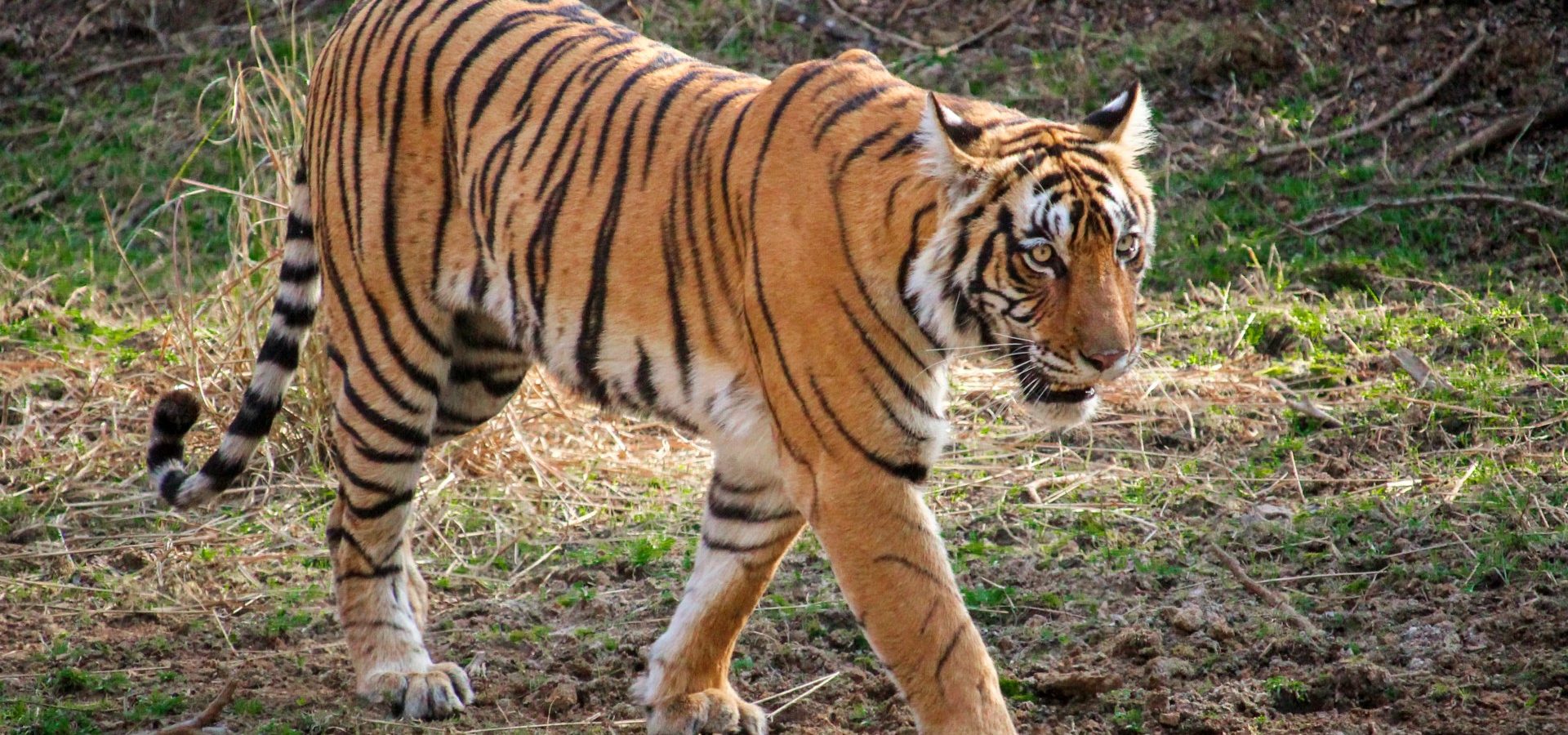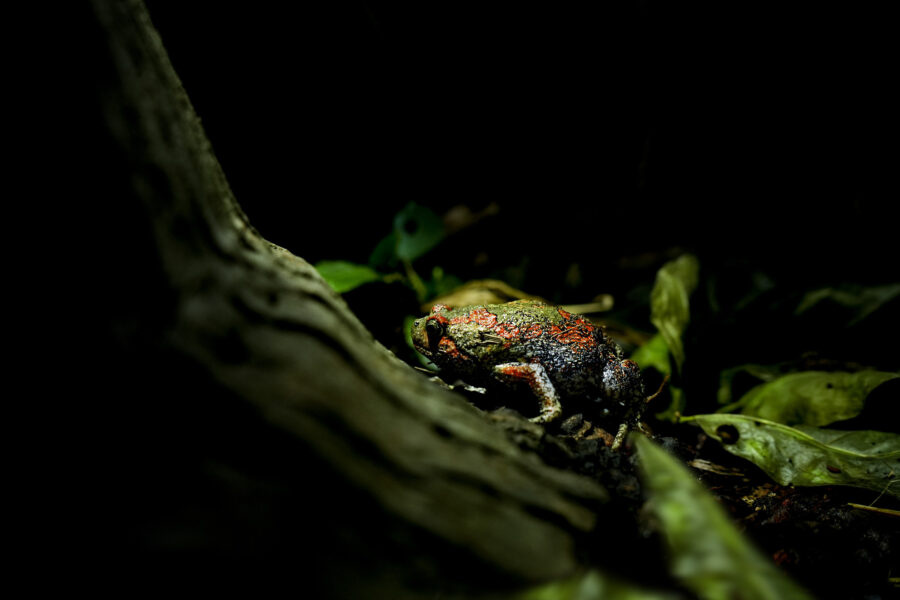Each year, we celebrate International Tiger Day on July 29 to turn the spotlight on the majestic big cat species — tigers. On this day, nature enthusiasts all around the world engage in conversations around the ecological role, prevalence, and population of tigers. There are nine subspecies of tigers across the globe, of which the Bengal tiger (Panthera tigris tigris) resides in the Indian Subcontinent and is also India’s National Animal. Not only are tigers apex predators, they also serve as an umbrella species of the forests, which means that their conservation would in turn protect the other species that coexist in the same habitat.
Even though tigers maintain a crucial balance in the ecosystem, it is disconcerting to note that nearly 95 percent of the tiger population that inhabited Earth has been lost. International Tiger Day is an opportunity to raise awareness about the threats faced by this species and the conservation efforts to protect them.
Habitat Loss and Fragmentation
As the human population continues to expand, so does the need for more resources. Urbanisation is on the rise as we seek superior quality of life, greater sources of income, and state-of-the-art technology. As a result, we resort to encroachment and rampant takeover of naturally available resources. Plantations, deforestation, mining, and infrastructure development are gradually replacing the diverse, mystical natural lands. Over the last century, tigers have lost 93% of their historical range. While they were once found all across Asia, today the wild species inhabits only 13 tiger range countries.
Most of the remaining habitat fragments are either small, isolated, or degraded to hold viable populations. A 2018 report released by the Ministry of Environment and Forests of India notes that 1,923 tigers were found within tiger reserves. With a total number of tigers in India estimated to be 2,967, this would mean that 35 percent of these tigers are still outside protected areas.
Human-Wildlife Conflict
According to a recent report, the wild tiger population across the world is between 3,726 and 5,578, which indicates a 40% rise from the numbers recorded in the 2015 assessment.
Tigers have been compelled to live in close proximity with humans because of their shrinking natural habitats. Human-wildlife conflicts often result in unfortunate consequences, such as mortality and injury, of both species alike. Moreover, it inculcates a negative attitude towards wildlife amongst local communities. For instance, those involved in agricultural practices often blame tigers for preying upon their cattle and even retaliate by killing or poisoning them.
Infrastructure development in the form of roads and railways contribute to human encroachment in the natural habitats. This puts tigers in a more vulnerable situation due to their inability to chart out their territory within the declining space, which often results in frequent encounters with humans.
Depletion of Prey Base
Tigers are big cats with a need for a large home range and ample amount of prey. They are top predators in the wild and generally known to prey upon animals such as ungulates, boars, and other small mammals, birds, and reptiles. A single tiger requires at least 500 prey animals to sustain approximately 50 kills each year. However, a decline in prey populations is forcing tigers to rely upon readily available livestock and stray populations. They are compelled to range more widely in search of prey, exposing them to greater anthropogenic threats.
Tourism Industry Use
Commercial setups that allow petting and taking photographs with tigers have been a great attraction in the tourism industry. While posing with tigers, we are actually contributing to a vicious cycle of torture and abuse. When animals are kept in captivity, there’s a heartbreaking backstory that we are often oblivious of. For tourists, it may mean a shareable photograph. But tigers endure over-breeding in captivity, separation of cubs from their mothers, drugging, and declawing.
Unfortunately, they are reduced to become mere props for tourists’ entertainment. Right after birth, cubs are stripped of their freedom by taking them away from the wild to be trained. They are forced to perform tricks, such as standing on their hind legs and jumping through rings of fire. Over 30% of the tigers seized in Asia between 2012 and 2015 were bred in captivity, and therefore, have had no interaction with their natural habitat. Most are kept in chains or small, barren cages with no space to perform their natural behaviours.
Illegal Trade and Poaching
A research article states that in the last twenty years, there has been a 50% decline in the global tiger population. Several countries still allow private ownership, exotic pet trade, and tigers being kept in roadside zoos and circuses. Southeast Asian markets form a hub for the sale of tiger pelts, claws, and bones amongst other body parts.
The research further elaborates that between 2000 and 2018, numerous enforcement agencies managed to seize about 2,359 parts derived from tigers globally. Parts like bones, genitalia, fat, flesh, and blood are also being traded for use in traditional Chinese medicines as they are believed to cure diseases. Derivatives like skin, claws and teeth have been curated for home decor, jewellery, and fashion items as well. Smuggling for such derivatives largely contributes to keeping poaching profitable.
What can you do about it?
While today, endless conservation efforts are being made, the battle for safeguarding this magnificent species is far from over. To ensure that the tiger population is restored in the wild, it is important to take lasting steps now!
Wildlife SOS’ anti-poaching squad Forest Watch assists enforcement agencies like the forest department, Wildlife Crime Control Bureau, and Central Bureau of Investigation, by gathering and relaying valuable intelligence pertaining to wildlife trafficking and crimes. The organisation has assisted enforcement authorities in the seizure of animal skins and body parts and has been instrumental in nabbing poachers. Earlier this year, Wildlife SOS assisted the forest department in rescuing a Bengal tiger from Etah district, Uttar Pradesh.
Due to lack of provisions on enforcement, tigers and other wild animals are rampantly used in traditional Chinese medicine. Wildlife SOS has launched a petition to urgently ban the use of wild animals for both medicine and food in China. You can sign and share this petition to ensure that the Chinese government takes action to protect wildlife.
Let’s engage in ethical wildlife tourism by voicing our concerns against tiger abuse in petting zoos, and vehemently discourage the use of any products. It is important to remember that the big cat’s conservation not only protects a singular species, but also ensures an ecological balance for other species in their respective habitats. You can support Wildlife SOS’ anti-poaching by making a contribution here.





